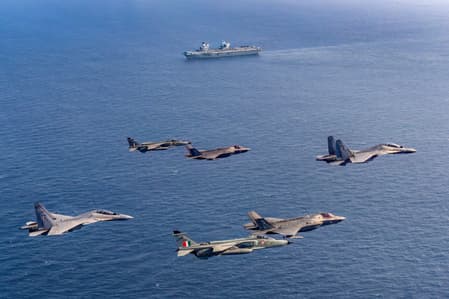Indian Air Force and Royal Navy Conduct Joint Aerial Drill Over Indian Ocean
Related Articles
सिंहस्थ कुंभ से पहले कुशावर्त कुंड का होगा जल शुद्धीकरण, 3 घंटे में साफ होगा पूरा कुंड
आगामी सिंहस्थ कुंभ मेला को देखते हुए त्र्यंबकेश्वर स्थित पवित्र कुशावर्त कुंड के जल शुद्धीकरण और पुनरुद्धार की दिशा में बड़ा कदम उठाया गया...
Three per cent job quota secures future of tea garden community: Assam CM
Assam Chief Minister Himanta Biswa Sarma on Thursday said the state government’s decision to provide three per cent reservation to the tea garden community...
“Woman Can Go To Hell”: Giriraj Singh Defends Nitish Kumar Over Hijab Row
Union Minister Giriraj Singh has strongly defended Bihar Chief Minister Nitish Kumar after a video surfaced showing Kumar pulling down a veiled woman’s hijab...


